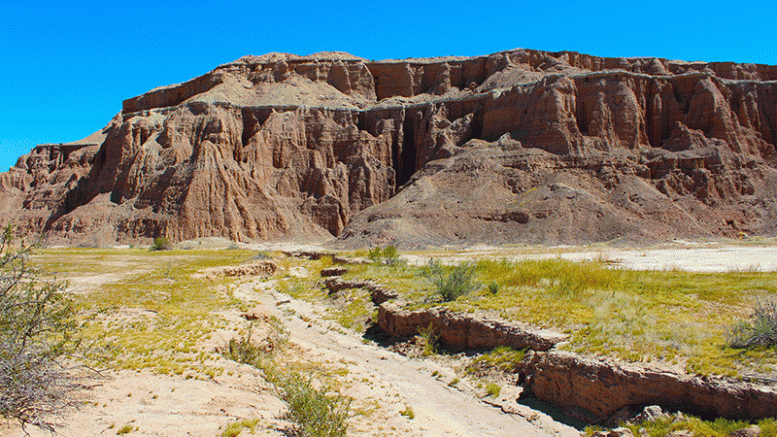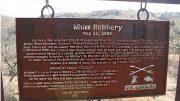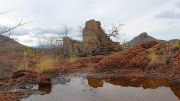By Brooke Curley
RED KNOLLS – It rises like a giant question in the distance. Said to possibly be recorded in the history of the conquistadors, Red Knolls remains a mystery to most but a bright spot in the Gila Valley’s history.

Brooke Curley Photo/Gila Valley Central: Looking up through the roof of one of the caverns, individuals can see the various layers of rock and clay.
Just east of Pima, Red Knolls is an immense clay formation that rises to the left of lengthy cotton fields. Hal Herbert, of the Graham Historical Association and Restoration Committee, and Jay Rasco, of Southeastern Arizona Clean and Beautiful, recently took Gila Valley Central on a historical tour of the area.
“There are two major events,” Herbert said. “Historically, when Coronado came in his exploration in the early to mid-1500s, the guy that was writing for him, his secretary, indicated that they saw a structure that they (called) “Chichilticali”, meaning red house. Many people believe because it looks red in the sunlight that this is Chichilticali. Many people from New Mexico don’t want to accept that because they think that the Coronado went on the other side of the Gila Mountains in New Mexico.”
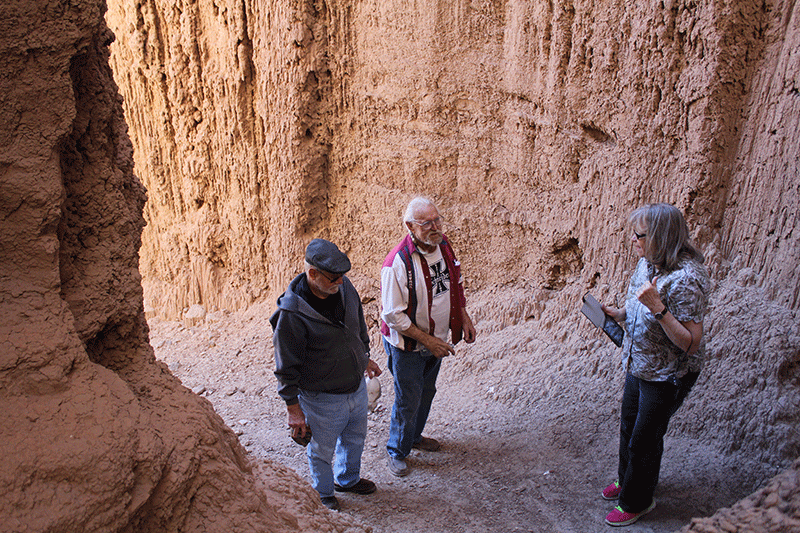
Brooke Curley Photo/Gila Valley Central: From left, Hal Herbert, Jay Rasco and Gussie Fick stand in one of the off-shooting passages where horses and extras were hidden when pageants were being performed.
Although historians and archaeologists are still searching for Chichilticali (pronounced, Chee-CHIL-tee-CAHL-ley,) to end the debate of Coronado’s true route, the mystery remains unsolved because of the lack of historical evidence.
“That’s what I would suspect,” Herbert said. “And that’s what local historians have always thought but nobody has really proven it.”
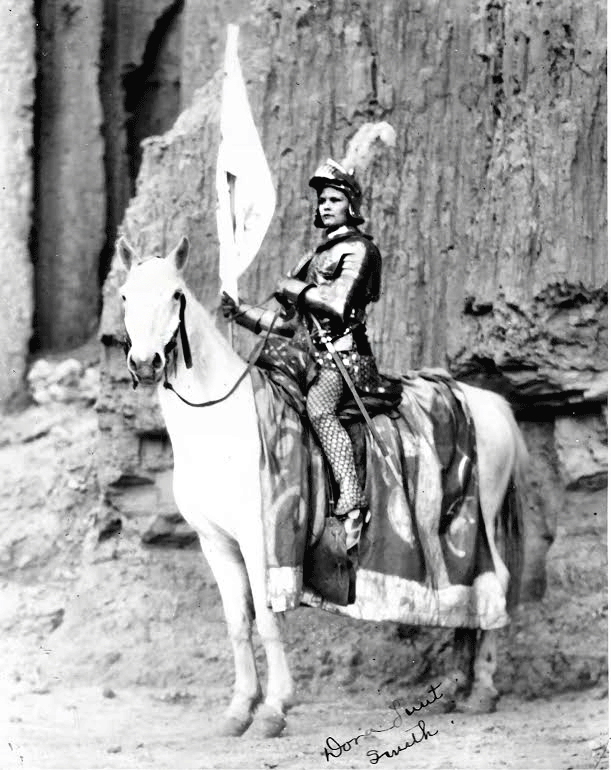
Contributed Photo Courtesy Graham County Historical Society: Joan of Arc was played by Dora Lunt Smith.
While the earliest history of Red Knolls is shrouded in mystery, its later history is well documented. Eastern Arizona College, though at the time it was the Gila Junior College, produced outdoor pageants located at Red Knolls. Due to the high reflective acoustic atmosphere of the natural clay formation, the college saw the location as a perfect natural amphitheater. Ironically, the seventh pageant presented at Red Knolls was a play titled “The Conquistadors.”
While some may think the college pageants were minor affairs, they would be wrong. The fourth pageant “Joan of Arc” was considered to be the most spectacular up to that time. Horses were used in the production, and the gate receipts for one night were totaled to be worth $2,060. There were electrical lights, and a stage was built for the performance.
Harvey L Taylor, a former president of EAC, wrote an article titled “A Theater in the Desert” about the productions at Red Knolls. Taylor described the pageants and the difficulties and triumphs.
“To produce the operetta at this spot presented many serious problems,” Taylor wrote. “The road to the Knolls was very poor, and there was no water within six miles. However, on April 25, 1927, the Gila Junior College presented its first production at Red Knolls. This performance was attended by 1,500 people. The committee had not anticipated such a tremendous crowd and had provided seats for only 500.”
Although the number of people attending the pageants were impressive, the pageant that received the largest audience was “The Prince of Egypt.” Based on the biblical story of Joesph, who was sold into Egypt, the play was the most spectacular of all the pageants, according to Taylor. More than 4,000 people attended the pageant, and horses, chariots and mules were used in the production. Rotarians traveled from all of the state of Arizona to attend the show.
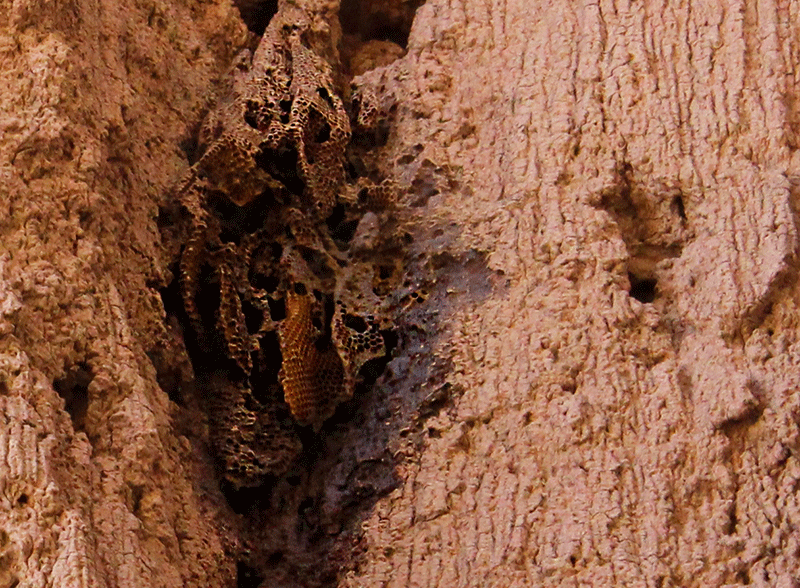
Brooke Curley Photo/Gila Valley Central: Bees have made their home in the dusty quiet that is now Red Knolls.
Now Red Knolls rests quietly in the Gila Valley sunlight. Bees build honeycombs in the walls where mighty productions boomed with music 90 years prior. Rasco struggles to bring back the natural beauty of the location by cleaning up the mess left behind by partiers and gun enthusiasts. While some visitors have burned immense pallet fires, leaving only the nails from the pallets behind, gun enthusiast have taken to using the knolls as their personal range. However, many gun-enthusiasts have not cleaned up after themselves, leaving bullet casings and other miscellaneous trash.
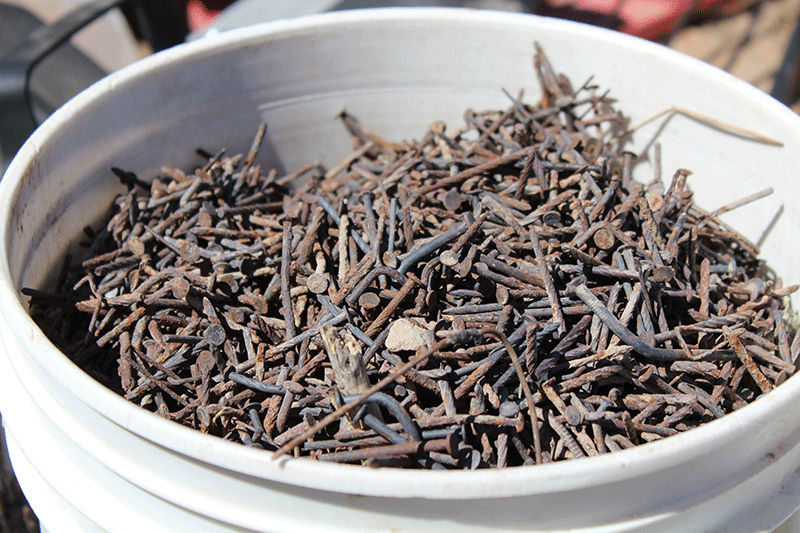
Brooke Curley Photo/Gila Valley Central: This full bucket of nails is just one of the many that Jay Rasco and his volunteers have collected from the Red Knolls site.
Through the hard work of volunteers in the Gila Valley, Red Knolls is far cleaner than it has been. Jay Rasco and his crew have hauled away literally tons of trash, including old refrigerators and buckets of nails and bullets.
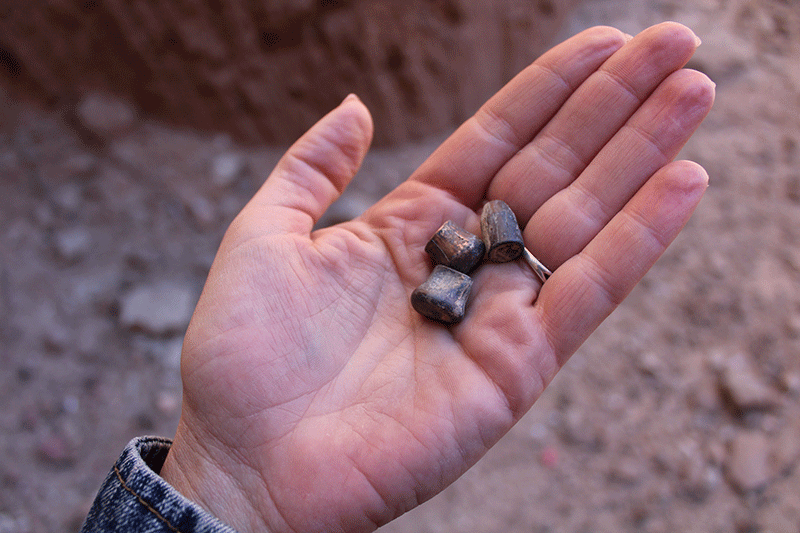
Brooke Curley Photo/Gila Valley Central: These are some of the many bullets that litter the area around Red Knolls.
However, Red Knolls is definitely a site worth visiting. With a rich history and curious origins, Red Knolls is a site for anyone to see who has ever lived in the Gila Valley.

